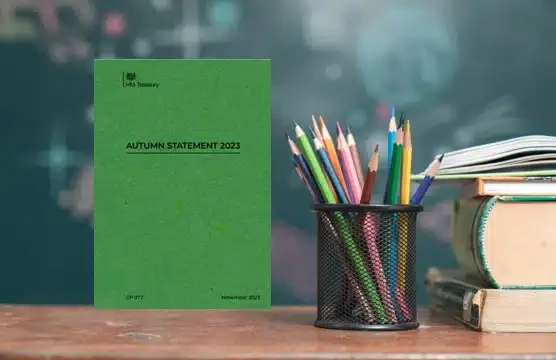As the echoes of the Autumn Statement reverberate, the economic landscape for schools in the UK undergoes a seismic shift. The Institute for Fiscal Studies (IFS) and the Confederation of School Trusts (CST) present a nuanced analysis, shedding light on the interplay of economic forces, departmental spending decisions, and the impact on schools’ financial health.
The Office for Budget Responsibility’s (OBR) forecasts, as highlighted by the Chancellor, showcase unexpected economic resilience, standing nearly 2% above pre-pandemic levels. Despite this, the decision to leave departmental spending largely unchanged in cash terms, utilizing a ‘windfall’ for tax cuts and welfare reforms, sets the stage for a complex financial scenario.
The IFS provides a sobering analysis, revealing that tax cuts have been offset by real-term cuts in public service spending, exacerbated by higher-than-expected inflation. This poses a direct challenge to departmental spending power, leaving schools vulnerable to the economic turbulence.
The allocation of an additional £2 billion to schools in 2023/24 to address inflationary pressures was a glimmer of hope in the Autumn Statement. However, CST’s consistent highlighting of the challenges faced by schools funded through the National Funding Formula paints a stark reality. Protections such as Minimum per Pupil Funding Levels, the Funding Floor, and the Minimum Funding Guarantee fall short for many schools, leading to substantially below-average core funding increases for 2023/24.
The funding outlook for 2024/25, announced in July 2023 and revised in October, indicates modest increases. Mainstream schools will see a 1.9% per pupil increase on average, with Minimum Per Pupil Funding Levels rising by 1.4% and the funding floor at 0.5%. The absence of new direct spending on schools in the Autumn Statement further compounds the funding challenges for the education sector.
Compounding the funding challenges is the deteriorating condition of school estates, as highlighted in previous articles. The National Audit Office’s (NAO) report draws attention to the pressing need for investment in school buildings. The current financial landscape, coupled with delayed funding, raises concerns about schools’ ability to address critical maintenance issues and provide safe and conducive learning environments.
As schools eagerly awaited the Autumn Statement, hopes were high for much-needed financial injections to support educational initiatives. However, the reality paints a different picture. The promised RAAC cash that schools had anticipated to alleviate budgetary pressures is yet to materialize. This delay puts additional strain on schools already navigating the complexities of budget management.

As the Government revises the GDP Deflator measure upwards by 3.6% to 6.1% for the current financial year, schools face a challenge in keeping pace with rising costs. With no specific indicator of inflation tailored to schools’ spending profiles, the impact on goods and services could be even more pronounced.
Adding to the financial woes is the surge in energy prices. The unprecedented increase, over 500% for electricity and 600% for gas, directly impacts school budgets. With the government resisting calls for financial support, schools are left with the daunting task of mitigating the effects of energy inflation on their operating costs.
The anticipated easing of earnings growth, coupled with the rise in the National Living Wage (NLW) in April 2024, poses challenges for school support staff. The CST urges the Department for Education (DfE) to consider the academy financial year in their cost considerations, recognizing the nuanced impact of pay awards across different school phases.
Other sector bodies have been critical of the autumn statement. The Association of School and College Leaders (ASCL) position emphasizes concerns about the financial impact on schools. Their General Secretary, Geoff Barton, points out that despite the Chancellor’s decision to maintain departmental spending and allocate additional funds to schools in 2023/24, the IFS has indicated that tax cuts have been funded by real-term cuts in public service spending.
ASCL also notes that the reduction in National Insurance contributions announced in the Autumn Statement is projected to only boost real household incomes by around 0.5% by 2028/29, leaving financial hardship for many households. Overall, the ASCL position reflects concerns about the overall economic impact and the potential implications for schools’ financial well-being.
The financial challenges stemming from the Autumn Statement’s aftermath underscore the need for strategic financial planning and resilience in schools. As senior leaders navigate the funding conundrum, they must adopt a proactive approach, leveraging available resources and exploring innovative solutions to ensure the continued provision of high-quality education.
In the pursuit of financial sustainability, collaboration between educational institutions and government bodies becomes paramount, as schools strive to overcome the hurdles posed by delayed funding, deteriorating estates, and escalating energy costs.
Author: Robert Gould FRICS
Partner, Barker